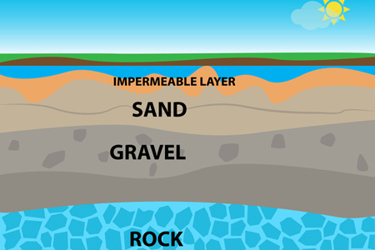Study Evaluates The Cost Benefits Of Recharge Net Metering For Groundwater Sustainability
By Christian Bonawandt

In drought-plagued states like California, scientists and water authorities have been searching for ways to stretch out or replenish precious natural water sources. One such method is through managed aquifer recharge (MAR). This process involves injecting water directly into aquifer wells, typically from stormwater runoff. MAR projects are a cost-effective way to avoid groundwater overdraws, but often require the participation of private landowners.
To solve this, researchers from the University of California Berkeley and University of California Santa Cruz developed a program called recharge net metering (ReNeM). Based on the principles of many home solar incentives, ReNeM reduces landowners’ water bills based on the volume of water collected through MAR projects in the hopes of encouraging them to build them. To prove the cost-benefit of ReNeM to both ratepayers and water authorities, researchers conducted a multi-year pilot study in California’s Pajaro Valley. The results were published in October 2023 in a paper in Nature Water.
How ReNeM Works
In 2016, the Pajaro Valley Water Management Agency (PV Water) piloted ReNeM with two large agricultural ratepayers. The program engaged three key parties: PV Water acted as the managing agency; Bokariza-Drobac Ranch and Kelly Thompson Ranch each participated as rechargers facilitating project development; and a third-party certifier (TPC), which was enlisted to identify viable sites, assist in project design, and monitor water quality impacts. Payments for enhanced infiltration were issued annually as partial rebates, though researchers insisted that other methods for reimbursement could be used.
The project goal was to generate an average of 1,000 acre-feet per year of infiltration benefit through ReNeM when fully operational. To determine this, researchers used a water balance approach, which considered factors such as how much water flowed into the ReNeM collection areas, the rain that falls directly onto those areas, water evaporation, and any changes in the storage of water in those areas.
Cost Benefits
The report utilizes data collected over the five years of the pilot program (2016 to 2021). However, in order to conduct a comprehensive cost-benefit analysis, researchers simulated hydrologic variability over a 25-year period. The analysis included a comparison of ReNeM's annualized costs with those of alternative management options, an examination of ReNeM's aggregate and distributional net present value (NPV), and a sensitivity analysis. The aim was to assess ReNeM's economic viability and its adaptability to changing conditions.
The primary findings from the analysis revealed three key results. First, ReNeM demonstrated the potential to significantly reduce groundwater overdraft at a lower cost compared to alternative management options considered. Over a 25-year period, the two ReNeM sites in the Pajaro Valley were projected to generate 9,375 acre-feet of infiltration benefit at $570 per acre-foot. By comparison, desalination was estimated to cost $7,500 per acre-foot. This positioned ReNeM toward the lower end of the cost spectrum when compared to alternatives, making it a financially attractive option. Only a more stringent conservation program was estimated to cost less.
Second, under various recharge scenarios, ReNeM consistently produced positive net benefits for both the groundwater basin and rechargers. The net-present value analysis indicated that, with two projects operating for 25 years, ReNeM was projected to generate approximately $1.9 million in value. These benefits were distributed, with around 86% ($1.63 million) accruing to the groundwater basin for resource enhancement and approximately 14% ($270,000) paid to program participants hosting projects on their land. This distribution emphasized the collaborative nature of ReNeM, with benefits shared among stakeholders.
Third, the sensitivity analysis highlighted ReNeM's adaptability and its responsiveness to changes in key variables. Factors such as annual recharge yield, water cost, scaling, project performance, and discount rate were examined to understand their impact on ReNeM's NPV. The results emphasized the importance of considering these variables and adjusting them based on local conditions, demonstrating ReNeM's flexibility in accommodating different scenarios. Overall, the analysis showcased ReNeM as a cost-effective and adaptable mechanism with the potential to address groundwater overdraft challenges and achieve sustainability goals.
Inherent Risks
The report admits that the findings, while promising, are limited and results can vary depending on a range of factors. The most obvious is hydrologic variability. While ReNeM is designed to prevent overdrawing from aquifers, long periods of drought can not only mitigate the program’s success but also hamper return on investment for landowners. In addition, upfront costs and financial limitations of would-be participants may also need to be overcome in order to see more such projects be implemented.
However, researchers expressed confidence that the flexibility of ReNeM makes it a viable alternative to desalination and other types of reclamation projects. For example, water authorities can customize rebate incentives based on regional hydrologic and/or economic factors and adjust them should factors change over time.
